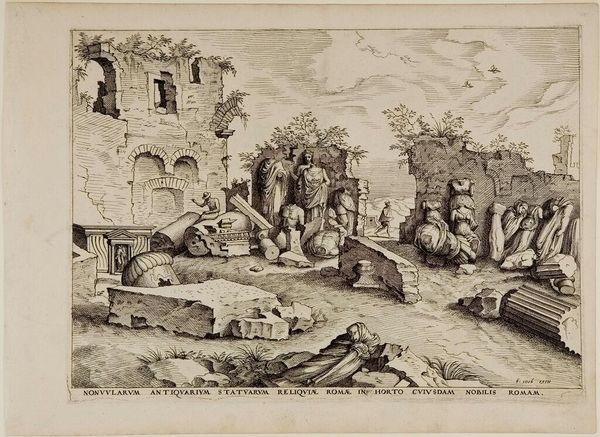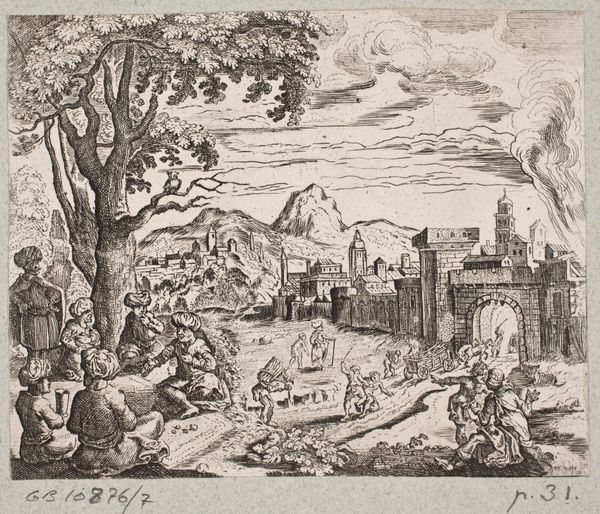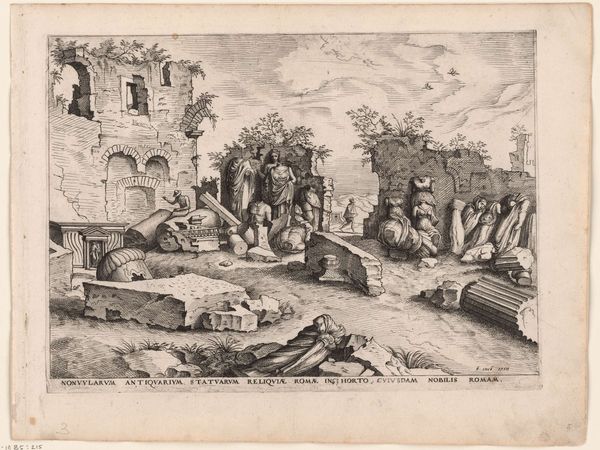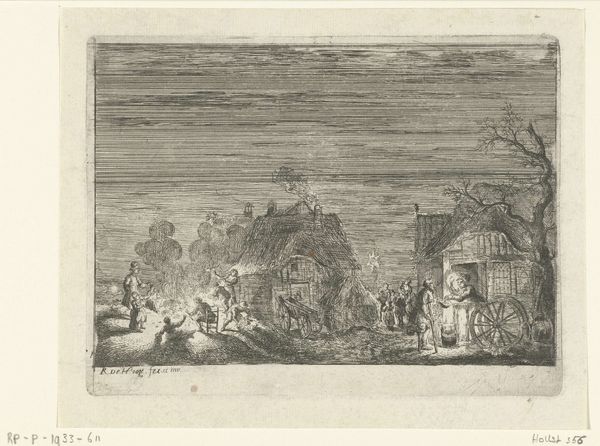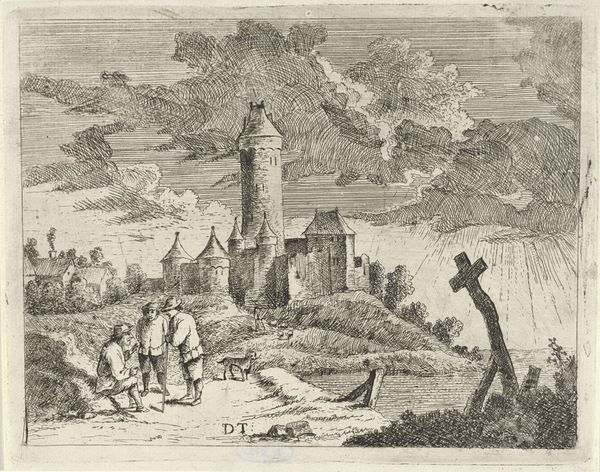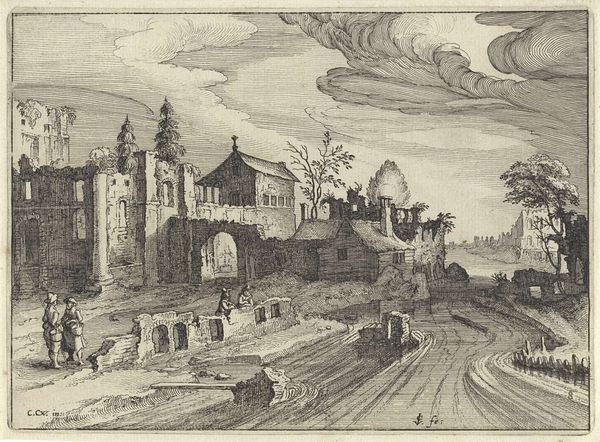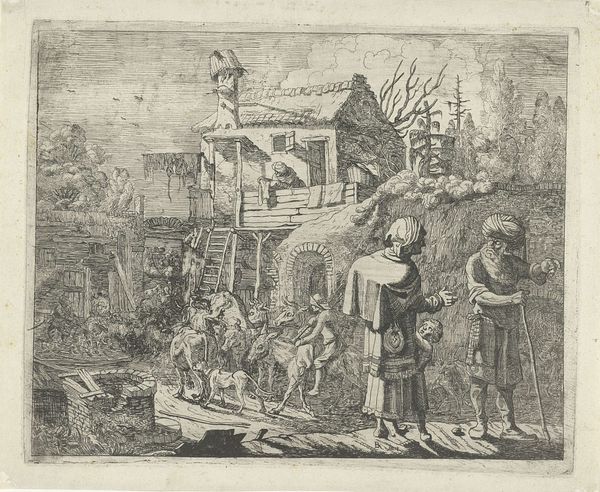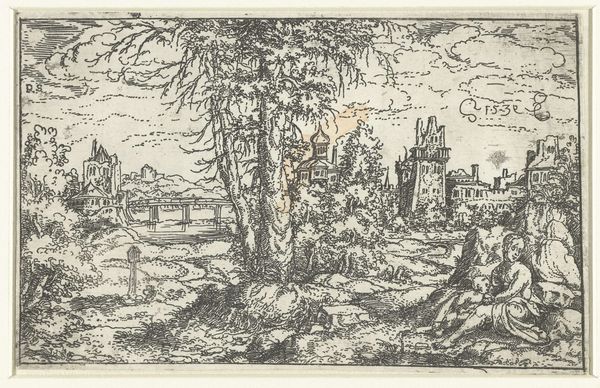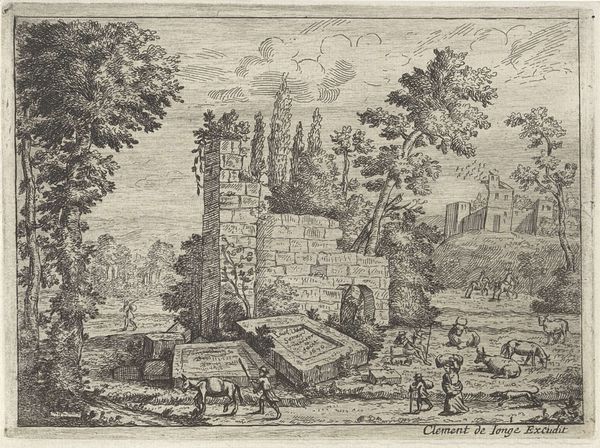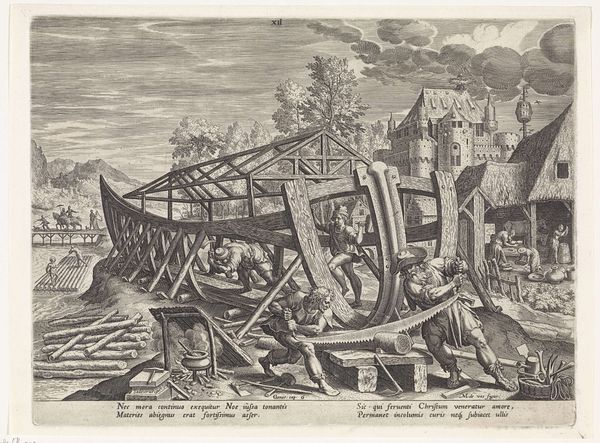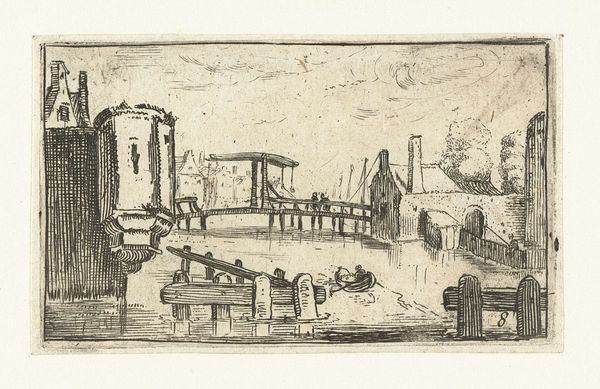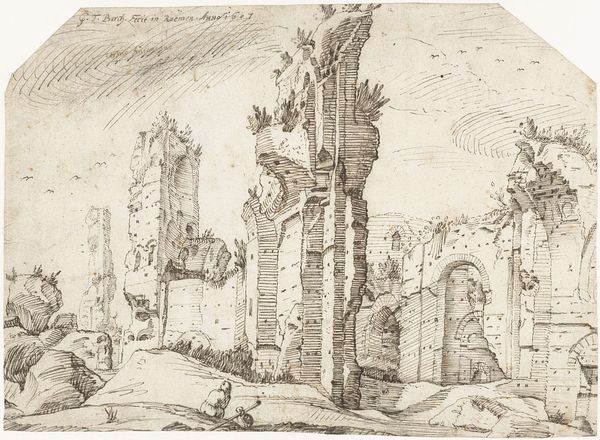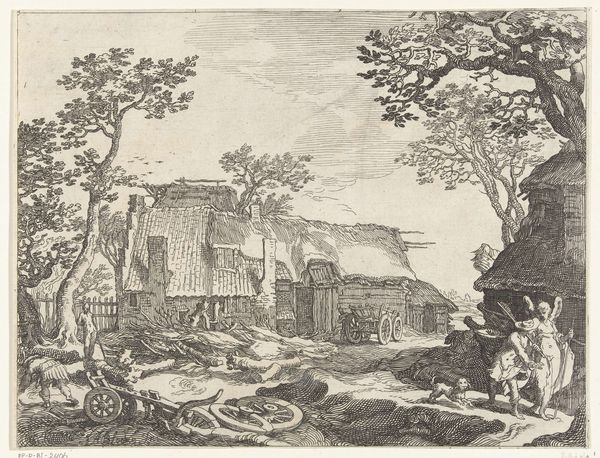
Pauselijk schip voor anker aan de kade van de haven van Messina 1603 - 1658
0:00
0:00
drawing, print, etching, ink
#
drawing
#
narrative-art
#
baroque
#
pen drawing
# print
#
etching
#
landscape
#
ink
#
cityscape
#
history-painting
Dimensions: height 132 mm, width 187 mm
Copyright: Rijks Museum: Open Domain
Editor: So, here we have Abraham Casembroot's "Papal Ship Anchored at the Dock of the Port of Messina," made sometime between 1603 and 1658 using etching, ink, and pen. There's such incredible detail in the textures of the ship, and the architecture...it's very striking. What can you tell me about the making of a work like this? Curator: Notice the contrasting levels of finish. See the intricacy dedicated to the ship versus the more crudely rendered figures working on the dock. I see a commentary on labor, and hierarchy, here. The drawing compels us to consider not just the *what* of representation but the *how*. Etching as a reproducible medium opens up questions around consumption. Who had access to this image? How did its materiality—cheap paper, readily available ink—shape its meaning for its intended audience? Editor: That's fascinating, the varying levels of detail indicating a kind of class structure in the production of images. Does the medium—printmaking—imply mass production even then? Curator: Precisely. Etching allowed for relatively inexpensive reproduction, meaning images like this could circulate more widely than unique drawings or paintings. But let's consider the labor: who etched the plate, printed the image, distributed it? These processes weren’t necessarily performed by Casembroot himself. It makes us think about art production less as an individual act of genius and more as a collaborative, industrial undertaking. Editor: It changes your perspective to think about it as industrial, almost like a little factory. Is that something completely new to this period, or are there precursors? Curator: The seeds were certainly sown earlier, with the rise of printmaking in the Renaissance, but here, we see a maturing of the process, one becoming increasingly intertwined with emerging capitalist economies and systems of labor. Editor: I had not thought about it in that light. Thanks for clarifying the process. It's clear that materiality really shapes meaning and gives context to labor. Curator: Exactly. Reflecting on the artwork this way, we've expanded its context and meaning beyond just aesthetic appreciation.
Comments
No comments
Be the first to comment and join the conversation on the ultimate creative platform.
